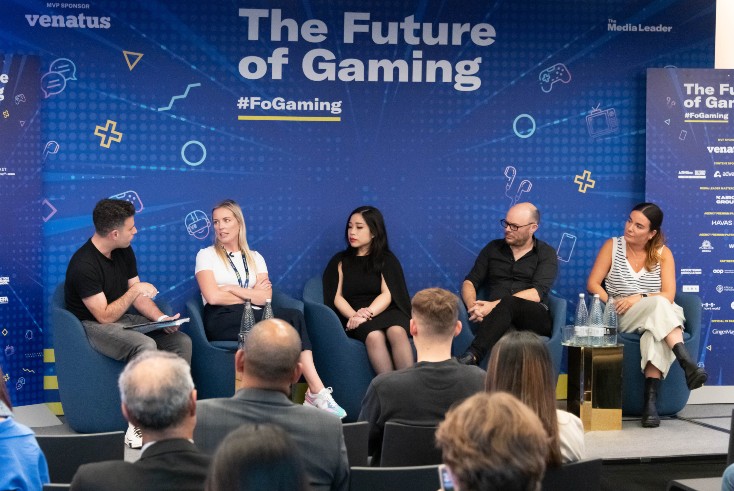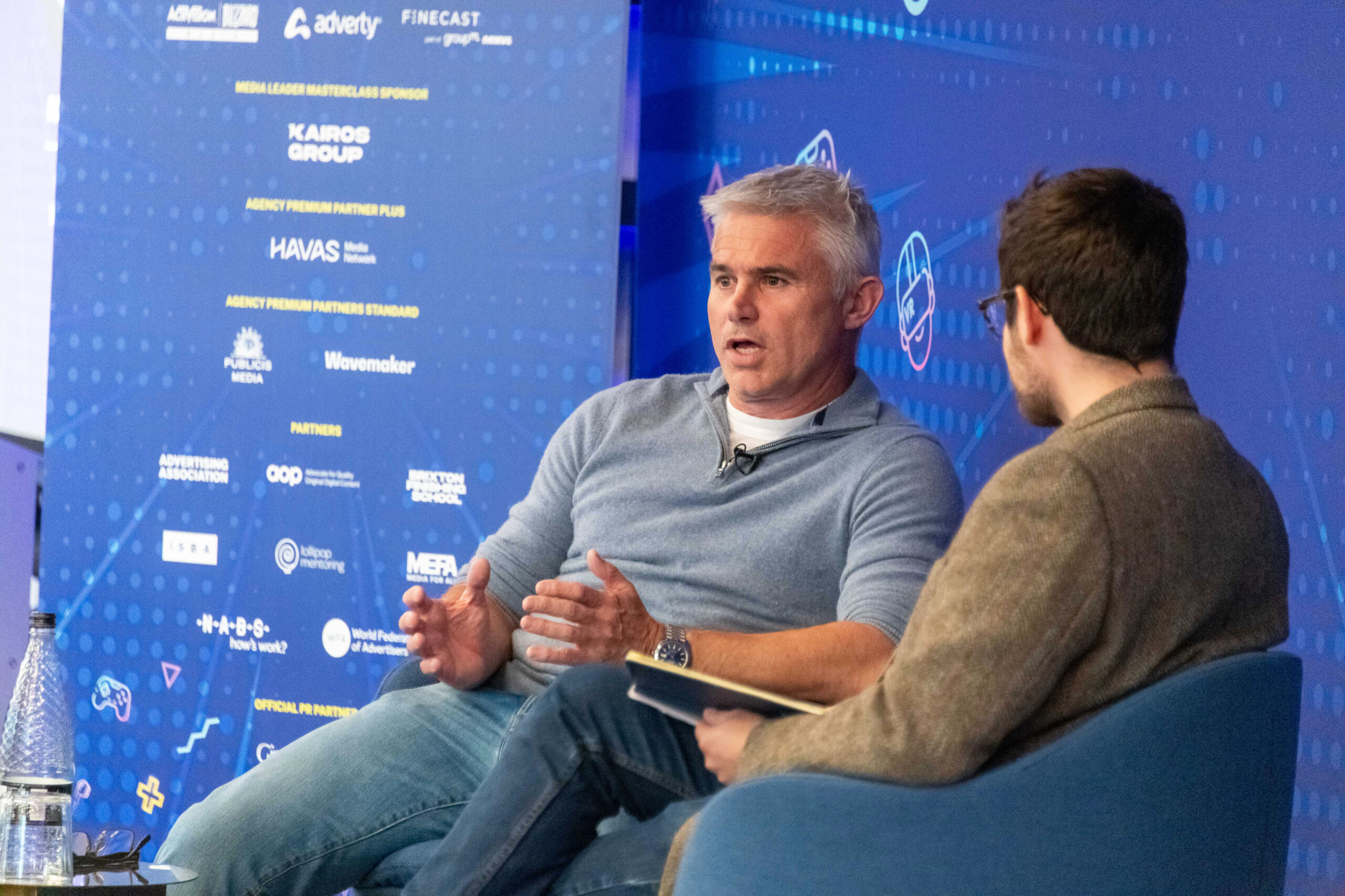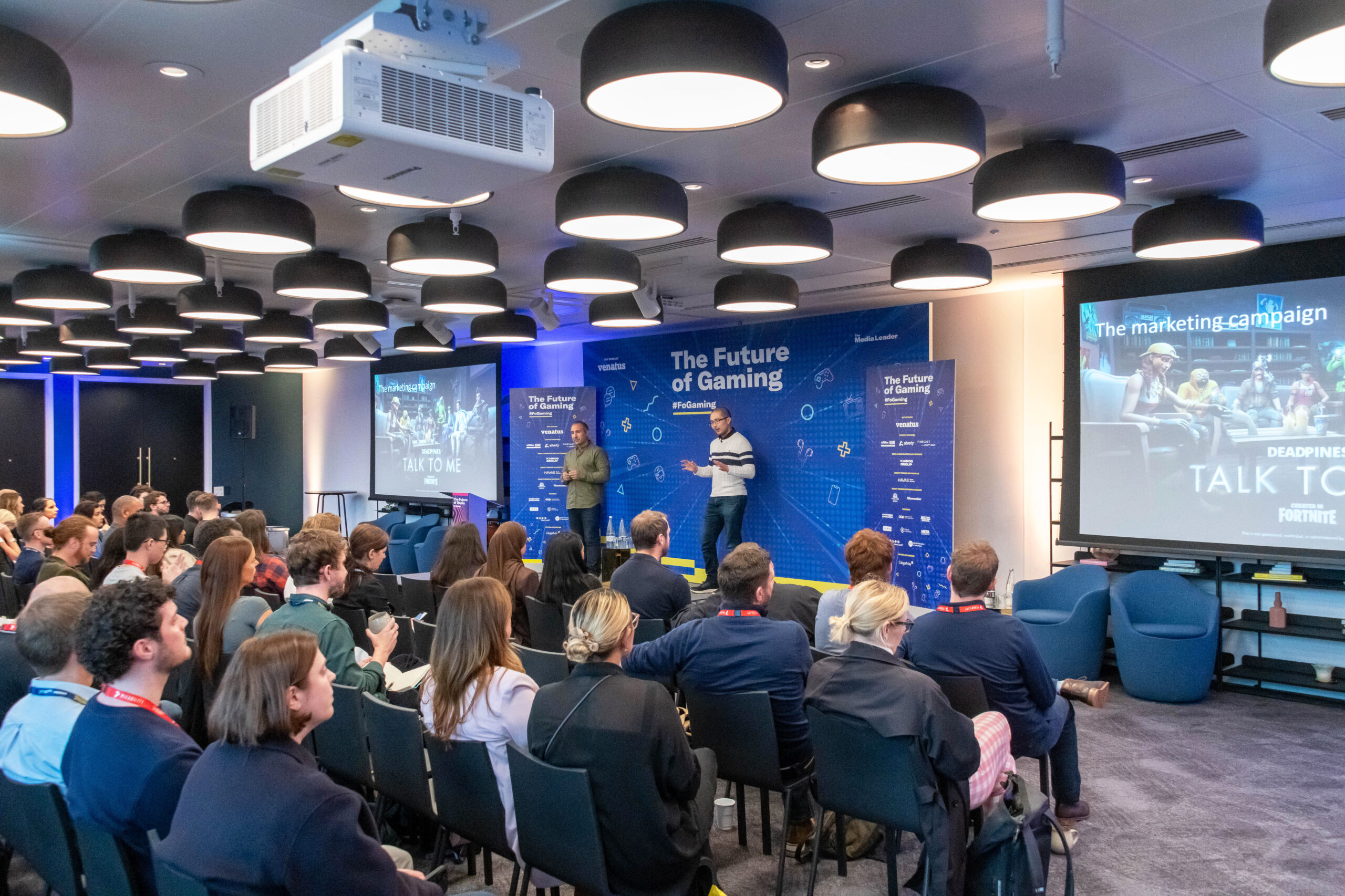‘Education needed’: 8 things we learned at The Future of Gaming

The Future of Gaming
This month’s The Future of Gaming event was full of advice for marketers on how to get into gaming and how to avoid the common pitfalls that have led brands to underinvest in what has become the biggest entertainment medium in the world.
Here are eight takeaways from some of the sessions at the event.
The key to cracking the market: education
A core theme running throughout the conference was the continued need for marketers and brands to better educate themselves on gaming audiences and inventory options both in-game and outside of games.
Rob Gay, the CEO of gaming adtech company Venatus, said that experts like them exist to help marketers properly target whichever subgroup of gamers they want to reach.
“One of the biggest problems I have with gaming is people are forcing people down one route,” he said. “I could tell you that mobile gaming is perfect [for some brands], console is perfect for others, and away-from-the-game is perfect for others, et cetera. […] Everybody games. Let’s just find the right games for you.”
He said that gaming is “littered with campaigns that have gone wrong, and people not coming back,” and thus recommends brands unfamiliar with the space start relatively small.
“I’d rather take £10,000 now and expand it out then take £100,000 and blow it.”
Who’s at fault for a lack of investment into gaming? Fingers point all around
Answering a question from the audience in his fireside chat session, Gay warned he was going to be controversial when he said that “talking to clients is much easier.”
“Clients understand their brand and totally get it. The problem is when you’re talking to agencies, because they then try and take that story away [from gaming]. Everyone’s trying to keep their job — ‘We’ve been buying this for the past 10 years, why are we gonna change?’ — if we can get in with clients and explain it, we’ll see it through.”
While Gay did temper his remarks with praise for some agencies who have done great work with brands in gaming, his suggestion that agencies were pushing clients away was controversial, at least among the agency delegates in the room.

Venatus CEO Rob Gay at The Future of Gaming event in London.
In a panel afterwards, Amy Meikle, the head of Wavemaker Play, said she didn’t believe agencies were the problem. While she offered that “We are protective over our clients,” and that agencies can “sometimes make the mistake of making assumptions of what our clients would want when we should push the boundaries,” she dismissed the criticism on the basis that if agencies fail to innovate and get into gaming, they will lose business.
“The agency world is so competitive right now that you have to be showing your clients that you’re looking at all new opportunities, all new places that you’re looking to test and learn,” she said. “We as agencies can’t afford to get that wrong and we as agencies can’t afford to dismiss gaming.”
Omnicom Media Group’s head of futures Phil Rowley added that his agency has been active in hiring gaming specialists to pursue opportunities in the space and create successful executions. He conceded that “if anything, we struggle to pass on the enthusiasm that we have and convert the inertia that we sometimes see amongst clients; that fear, that risk-averse nature […] It’s those things that we can struggle to break through.”
Zuckerberg’s vision of the metaverse is dead. The rest of ‘the metaverse’ needs a rebrand.
A key topic of debate this year was whether the metaverse, one of the biggest buzzwords of last year’s event, was still a relevant venture.
Gaming journalist Shay Thompson declared it “dead in the water,” prompting a panel later on to argue over whether she was correct.
There is an issue of definition, concluded the likes of Rowley and Columbia Business School adjunct professor Cecilia Dones. While Mark Zuckerberg’s version of the VR-enabled “metaverse” has not panned out as hoped, the more narrow Web 2.0 version of “the metaverse,” encompassing games with large communities and sub-games like Fortnite and Roblox are very much alive, popular, and lucrative.
But, as Meikle added, gaming’s negative association with the metaverse has been impacting advertiser investment. Rowley thus warned marketers not to “throw the baby out with the bathwater,” by dismissing gaming “on the basis that Zuckerberg’s venture in particular was a difficult thing to deliver.”
Big ‘non-endemic’ brands are embracing the medium
Multiple delegates recognised that gaming has grown in stature significantly since the pandemic. Not only are there more gamers now, but brands have caught on, too, and have been sticking with their bets in the medium as they continue to test and learn.
Among the big brands listed as having advertised in gaming include ‘non-endemic’ brands (i.e., brands that are unlikely to have a direct connection to stereotypical gaming audiences) like Unilever, Charlotte Tilbury, Mercedes, Visa, and the UK Government.
Gaming is endemic
Too many brands still think of gaming audiences as more narrow than they really are.
Nick Westwood, the SVP of creative and strategy at professional esports company Guild, said that gaming is “endemic” especially among anyone under the age of 18. “There’s no such thing as ‘gamers’ [anymore] because everyone just does it. The tribalism that we saw at the advent of digital content […] and the difficult for advertisers to market those people is sort of negated by gaming because everyone’s gaming.”
That said, it’s not just young people gaming. Casual mobile gamers are still gamers who are worth reaching, with the likes of Candy Crush remaining among the most popular Activision titles (which is now owned by Microsoft). Meanwhile, The New York Times has quietly become one of the biggest gaming companies in the world through the success of games like Wordle, Spelling Bee, Connections, and its crossword.
Film and gaming are synergistic mediums
While gaming and film and TV have not always had the best relationship (the graveyard of failed game adaptations includes: Prince of Persia, Silent Hill, Alone in the Dark, Far Cry, Max Payne, Resident Evil, Hitman, Tomb Raider, Assassin’s Creed… we could keep going) this past year has seen successful examples with HBO’s The Last of Us and Universal Pictures and Nintendo’s The Super Mario Bros. Movie.
From a marketing standpoint, there are also lessons to be had in using games to promote films, especially when game and film genres can align. Case in point, A24’s horror hit Talk to Me (distributed in the UK by Altitude Film Entertainment Group) was promoted with a horror game integration in Fortnite. The unique activation cut through to reach young audiences amid a flurry of big advertising for the likes of competitors Barbie and Oppenheimer, which were released in the UK a week earlier.
“It wasn’t a huge leap for us to go from there are a multitude of fans of horror films to there are a multitude of fans of horror games,” said Hamid Habib, the chief experience officer at Havas Media Group. Havas helped create the activation, which included a recreation of the film in the game environment, which was well-played by streamers and average gamers alike, creating earned media value.

Havas Media Network’s Hamid Habib and Altitude Film Entertainment Group’s Kenji Lloyd discuss their campaign for Talk to Me in Fortnite.
Communities are at the heart of gaming and could make for interesting traditional plays
Esports professional and Twitch streamer RubyPlays told a packed audience that her favourite part of her job is interacting with the community of individuals who watch her play. “People make friends online, people get into relationships online. The community makes streaming so much fun for me.”
Connecting with that sense of community in the right ways is to key for brands to position themselves as authentic in the eyes of stereotypically sceptical audiences. “Because it’s an area that has been built authentically [without brands] it’s an area that could be quite valuable,” said Westwood. He argued that as real life sports leagues are underpinned by media and advertising, there is still room for the same to be true of esports and gaming more broadly.
What people play and how people play is less important than why people play
Mark Bellamy, strategy director at Kairos Group, told attendees of his session with Hannah Winterbourne, senior Heinz comms & brand build manager international, that brands should focus more on the reasons behind why people play games in general than what types of games are being played and how.
“We always talk about the reason why you play, not just when you play and what you play. We talk about how often you play and what you play, but actually, the reason and the motivations behind why gamers play is how we start to categorise who you should be talking to.”
He gave examples of achievement-based solo gamers, competitive gamers in teams, and the more casual gamers who play games based on connections and social gaming and the “enrichment” or escapism side of gaming.
Various audiences play for different reasons, at different times, with different people in different ways, and brands need to be keyed in to that emotional connection to understand how, when and where to speak to gamers authentically in their advertising.




